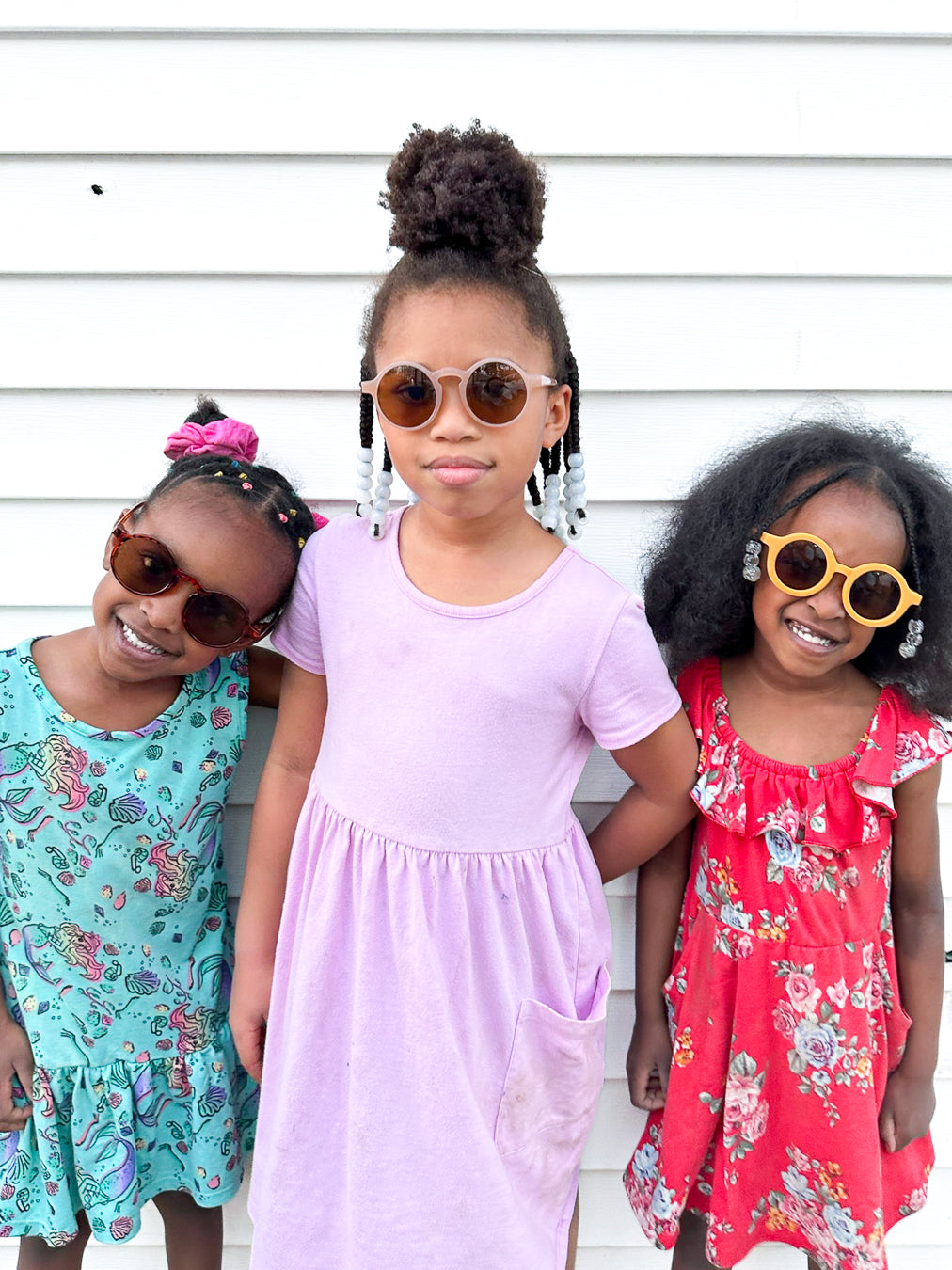Suns Out? Shades On!
Did you know the lens of a child's eye allows more ultraviolet (UV) rays to enter it than an adult's? As the defence mechanisms in children's eyes are still developing, overexposure to UV rays can cause significant damage, leading to vision problems in the future.
How does UV light affect the eye?
UV light is invisible electromagnetic radiation that is emitted from the sun. This radiation can permeate the structures in the eye, causing damage to the eyelids, retina, macula, cornea and lens. The impact of this damage is not normally seen until the child becomes an adult, which is why it is so important to protect developing eyes from the sun.
What conditions can UV exposure cause?
Just like our skin, the eyes can also become sunburnt when exposed to too much sun. This condition is known as Photokeratitis, and it can cause irritation, sensitivity, severe pain and eyelid spasms due to damage to the cornea.
An over-exposure to UV rays can also lead to Pinguecula and Pterygium, which are growths on the eye's conjunctiva (the transparent membrane that lines the surface of the white part of the eye). Pinguecula is a raised growth caused by a deposit of protein, fat, or calcium on the conjunctiva. Pterygium may start as Pinguecula and is caused by the growth of fleshy tissue and blood vessels. Due to these growths, light cannot enter the eye through a clear path, thus preventing the brain from processing light into images.
As the eyelid skin is the thinnest in the body, overexposure to UV rays can lead to dryness, loss of elasticity, pigmentation and dangerous skin cancers such as melanoma. This is particularly concerning for Aussie families as they have some of the highest rates of UV-associated diseases in the world. These cancers not only affect the eyelid skin but also the conjunctiva and the retina.
Research shows UV damage can also increase the formation of cataracts, a condition that causes the clouding of the lens of the eye. Like Pinguecula and Pterygium, this clouding prevents light from entering the eye through a clear path, leading to blurred vision.
Over-exposure to UV rays in childhood can also significantly increase the chances of Macular Degeneration developing. Macular Degeneration occurs due to the deterioration of the retina, which is the part of the eye that transmits signals to the brain to process into images. This is the leading cause of age-related blindness in Australia.
Why is outdoor play still important?
Playing outdoors and exposure to small amounts of UV light are proven to promote healthy eyes and bodies. When your child is outdoors, they often have to look at and follow objects that are far away, reducing the progression or development of near-sightedness (myopia). Additionally, they can get their daily hit of Vitamin D, and by moving their bodies, they can improve gross motor functioning, muscle and bone strength, as well as physical endurance. While playing outdoors, your child can learn about nature and the environment, increasing their appreciation for the world around them.
How can I protect my child's eyes?
Here at Speckles, we recommend looking for sunglasses that are 100% guaranteed to block UVA and UVB rays. Most sunglasses now have UV protection built into the lens rather than being coated on top of it, and most trustworthy products indicate UV protection on their labels... like ours. It is important to look for frames and lenses that protect the entire eye. You can learn more about what to look for when shopping for kids' shades in this blog!
Other great ways to protect your children's eyes from the sun include putting on a hat, playing in shady areas and avoiding the sun when it is at its strongest (between 10 am and 4 pm).


